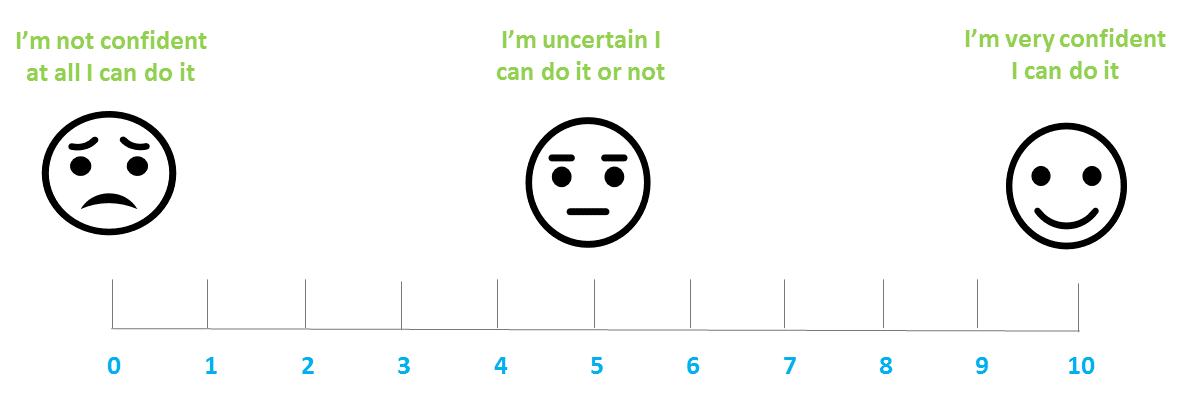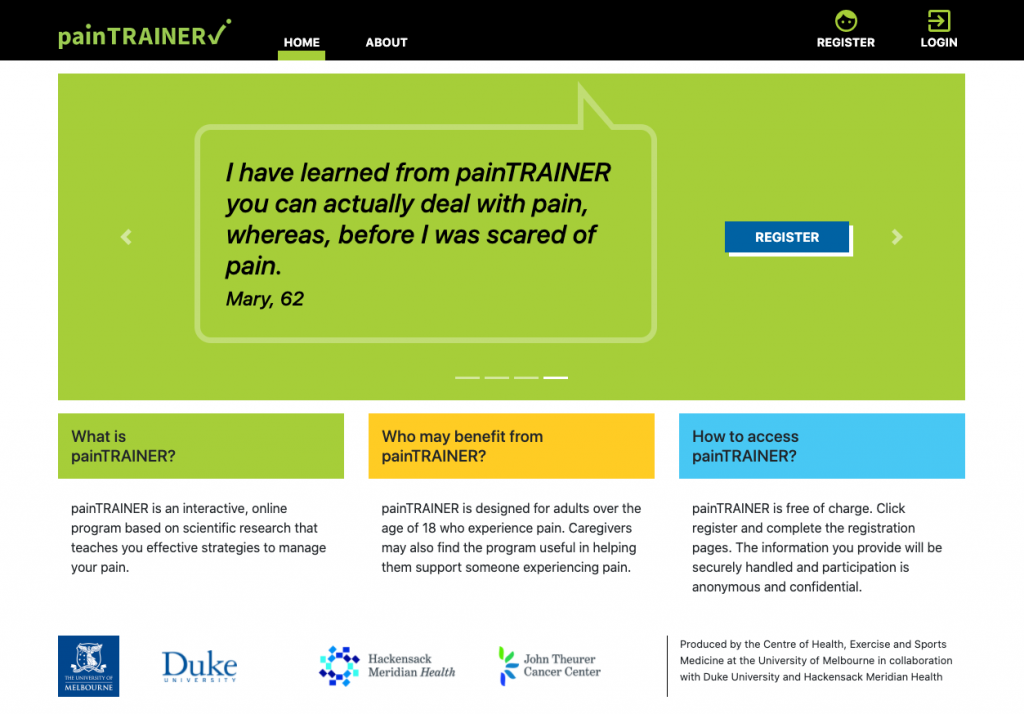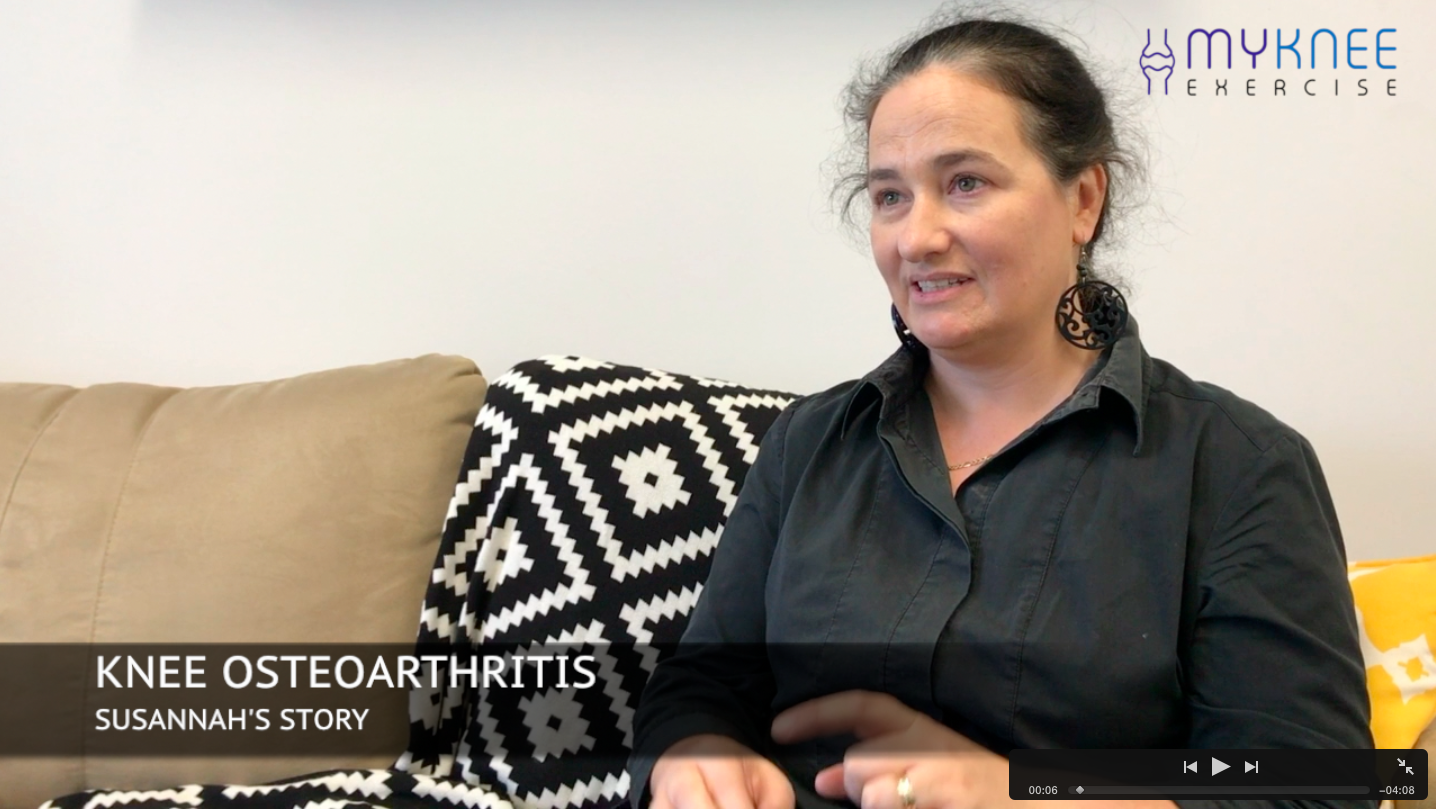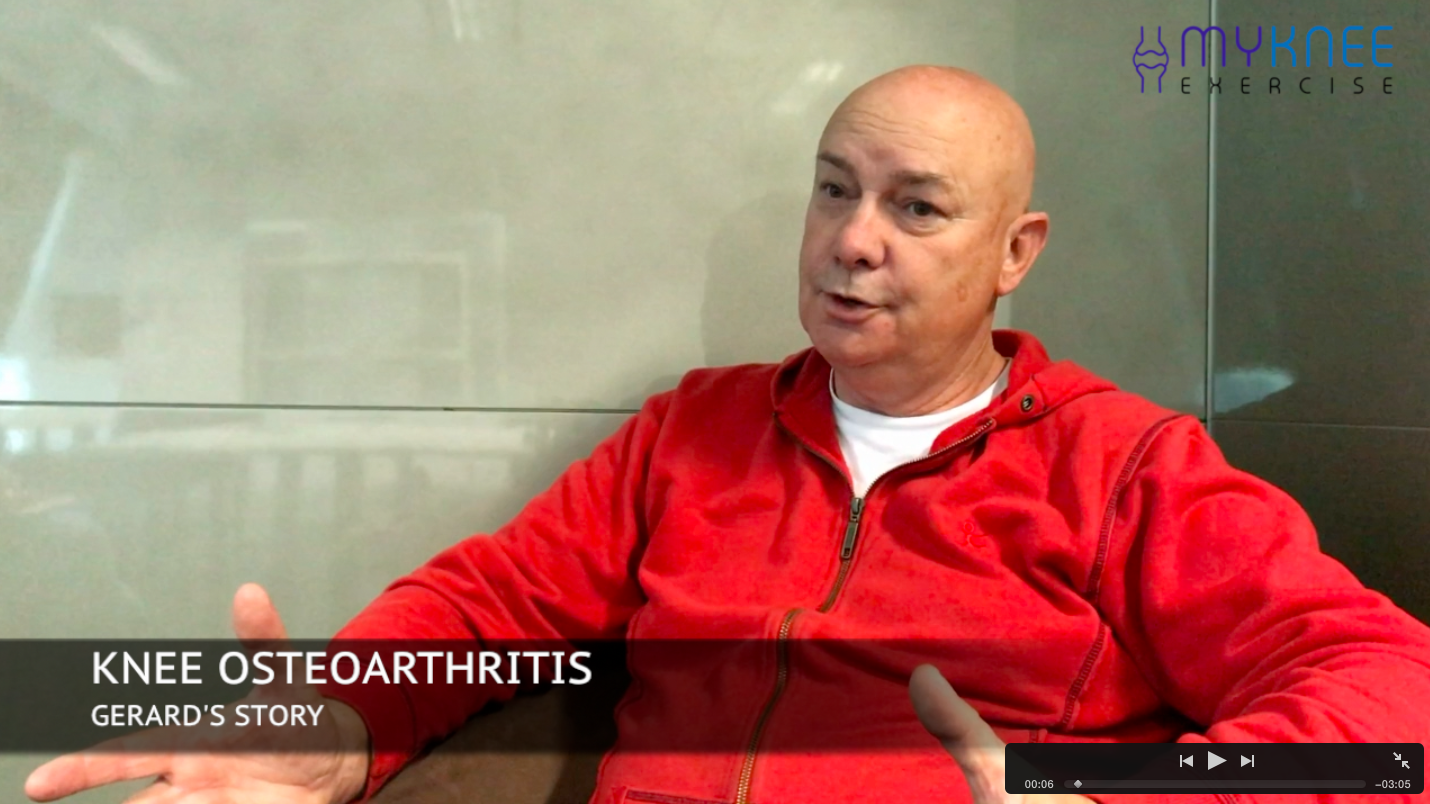My Knee Tools
All your My Knee Exercise tools in one place
My Knee Tools contains all of the resources used throughout the website, in one easy to access place.
Review each section so you are familiar with the exercise tools. They can be helpful when trying to become more active.
The My Exercise Messages app supports your My Knee Strength exercises
We all know it’s tough sticking to a regular exercise program. So, to help with your My Knee Strength exercise we’ve developed an exercise support app called My Exercise Messages.
What is the exercise messages app: My Exercise Messages is a free and easy to use app designed to support people with osteoarthritis (chronic lower limb joint pain) stick to regular exercise. It can be used with your My Knee Strength exercises or any exercise program prescribed by a health professional. Simply download the app from an app store, allow notifications, and input your weekly exercise goal. The app will prompt you to log your exercise sessions each week so you can monitor your progress against your goal, over-time. You’ll receive tailored messages based on behaviour change theory and university-led research. These messages will help motivate you and will support you if you encounter challenges getting your weekly exercises done.
Who created my exercise messages: My Exercise Messages was designed by research physiotherapists at the Centre for Health, Exercise and Sports Medicine (CHESM), The University of Melbourne. Our research shows tailored messages based on behaviour change theory help people with osteoarthritis stick to their exercise program. This app was developed by the Melbourne eResearch Group within the School of Computing and Information Systems at The University of Melbourne.
How to access the app: Simply download the app from the app store supported by your mobile phone or tablet. Click on the links below.
We recommend you use ankle weights in your My Knee Strength Program.
You don’t need ankle weights to start your My Knee Strength exercise.
But, after one week we recommend you add them to your program. Using ankle weights increases the challenge. So, you’ll build muscle strength and ultimately reduce knee pain. Within Program One, Two and Three each exercise has instructions of how to increase the challenge.
Recommended ankle weights
As a guide, people with knee pain have gradually increased to use 10kgs for some of the exercises. Some people even progress to 15kgs or more!
If you don’t have ankle weights we recommend you purchase a pair. We recommend adjustable ankle weights. Adjustable in 1kg increments is best, with a maximum weight of 10kgs a pair. You can use single ankle weights too, if you would prefer.
Why use adjustable ankle weights? You’ll find some exercises easier than others. This means you’ll use different weights for different exercises. Adjustable ankle weights may be more cost effective in the long run.
Where to buy ankle weights?
You can buy ankle weights from a range of places.
In a store: Try your local sports or department store. Most department stores stock ankle weights in their sports section. Department stores are more likely to stock single ankle weights. Not many stock adjustable ankle weights. We recommend calling and asking before you head in-store.
Online: You can order ankle weights from an online store. All online stores can deliver to your home. We recommend searching online for ‘adjustable ankle weights’. You can select from a range of different companies offering the price and delivery time that suits you. Example online stores include Ebay and Amazon.
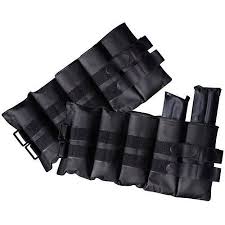

Resistance exercise band
A couple exercises suggest using elastic resistance band to increase the challenge. If you decide to use resistance band you’ll need a 1m length. Resistance band comes in a range of strengths. We recommend getting two pieces. One piece of the easiest strength, the second piece the middle strength. You can purchase the band where you get your ankle weights. You can also purchase a piece of band from a gym or Physiotherapy clinic.
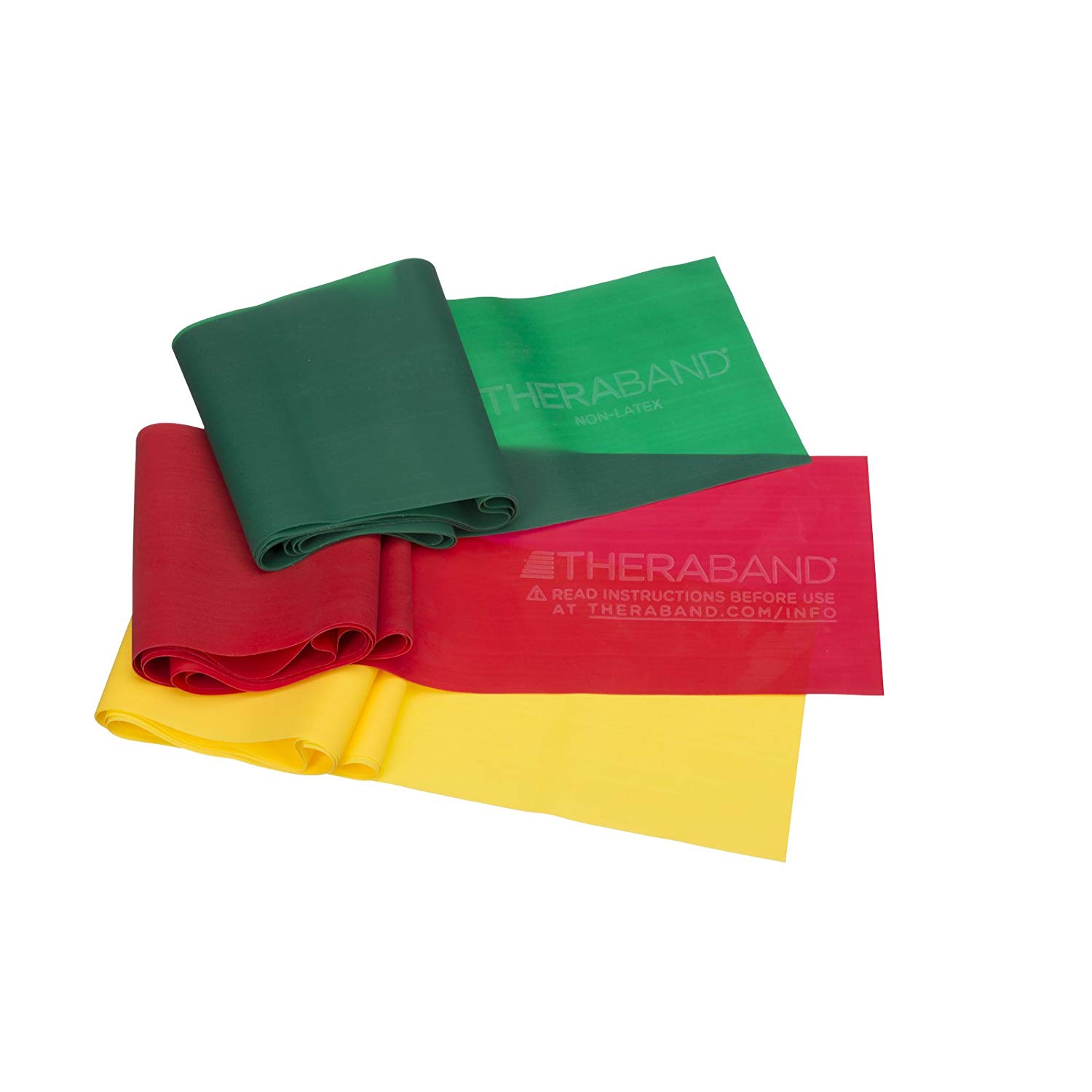
Make a plan to increase your physical activity.
Increasing activity can be hard. People find making a physical activity plan and setting a goal can help keep them on track. It might work for you too.
When making your plan keep in mind the ‘activity-rest cycle’. Avoid making a plan the falls into the ‘over-activity cycle’
To make a plan follow these 5 steps.
Click on each![]() to read more.
to read more.
Here are some things people do to make regular physical activity easier. You might find them useful too.
- Do physical activity at the same time as another task. Like the saying goes – two birds one stone.
- Make physical activity social. Be active with a friend or family member.
- Set a reminder in your phone.
- Give yourself rewards. Set targets to reach. Reward yourself each time you reach a target.
- A holiday or sickness can get in the way of regular physical activity. If this happens, set a date when you’ll resume your activity.
- Consider putting yourself first for once. Take time to be physically active. You’ll be more capable of looking after others if you take some ‘you’ time more often.
- Write your physical activity plan down. Use the template below.
- Keep a logbook to monitor your progress. Access your logbook in the next section: Record Your Progress
Next click on the video for more tips to help you start exercise.
Download and print the Physical Activity Template. Use it to record your physical activity plan. Physical Activity
Physical Activity
Plan Template
 Physical Activity
Physical Activity
Plan Template Example
My Knee Strength log books
Use the log books to record your My Knee Strength exercise each week.
Also record the weight you are using (when you add ankle weights).
Download and print each log book.
 My Knee Strength
My Knee Strength
Program ONE Log Book
 My Knee Strength
My Knee Strength
Program TWO Log Book
 My Knee Strength
My Knee Strength
Program THREE Log Book
Physical activity logbooks
Keeping a record of what physical activity you plan to do and what you actually do can help keep you on track. You might like to try it.
Use a logbook to record your weekly physical activity and your daily steps, if you’re keeping track of these.
Download and print this physical activity log book to use.
 Physical Activity
Physical Activity
Log Book
While we have good intentions, we all know it’s tough starting and sticking to regular exercise.
A range of things can and do get in the way of regular exercise.
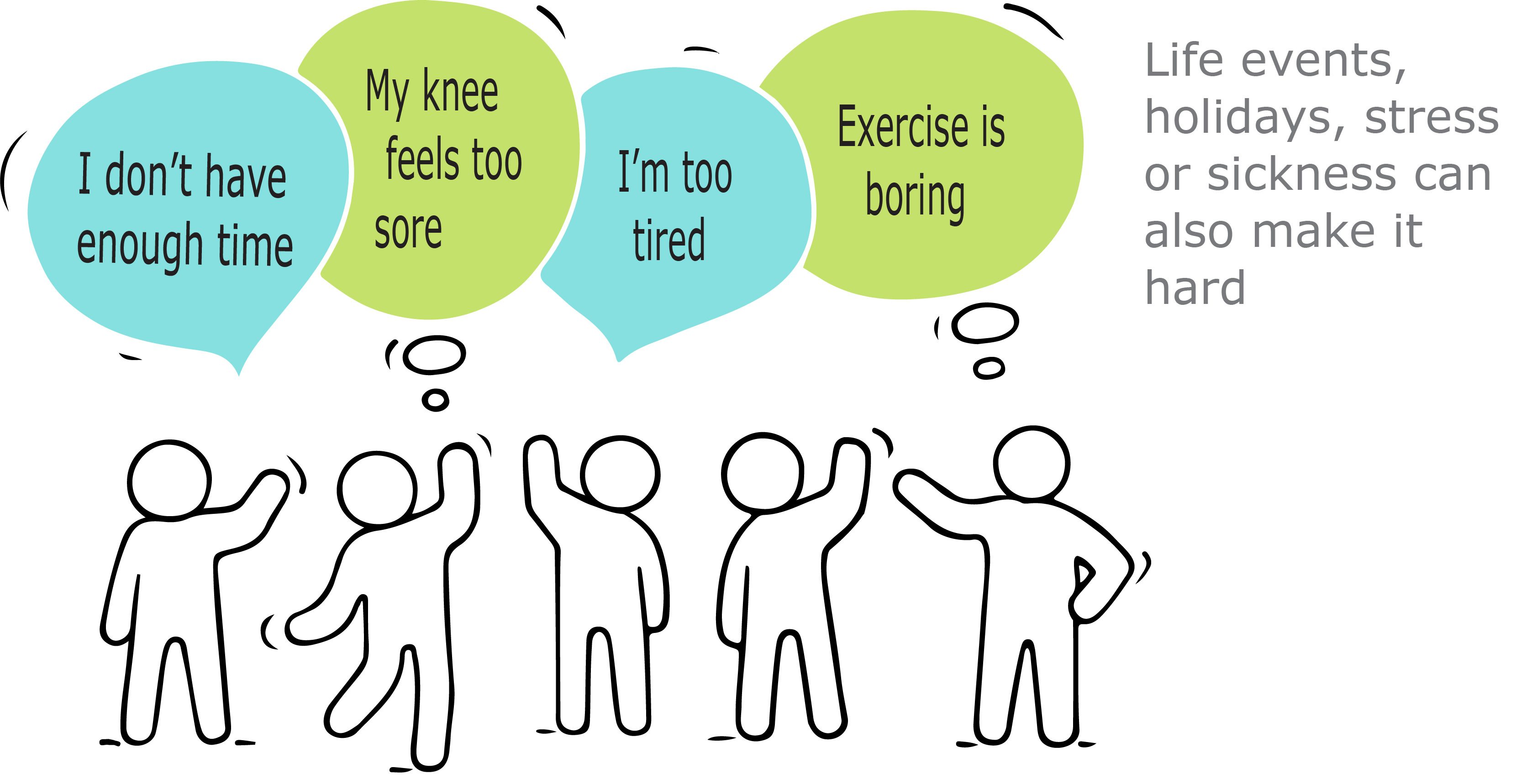
Planning for what could get in your way is an important part of starting and sticking to regular exercise. Make a plan of how you’ll fit your exercise into your day, despite the challenges.
Some ideas you might find useful:
Keep a record of your exercise in a calendar, diary or log book. Set a reminder to exercise on your phone. Make exercise social. Do it with a friend or get your family involved. Give yourself a reward to look forward to when you do exercise.Your mobile phone message support
To help you stick to your weekly knee strengthening exercises check out the My Exercise Messages app. It’s free! Find out more about the message support in the next section called Access Your Tailored Exercise Support.
Next click on the videos
Hear from knee pain experts and people with persistent knee pain.
In the videos you’ll learn more about common challenges that can get in the way of regular exercise and tips to help you overcome these challenges.
Certain behaviour techniques can also help people manage knee pain.
Scientific evidence shows that learning a range of behaviour techniques can really help people manage and cope with persistent pain.
The Centre for Health, Exercise & Sports Medicine (CHESM) at the University of Melbourne have developed a program called painTRAINER to help people learn these techniques.
The painTRAINER program is an interactive, online tool that teaches you effective strategies to manage your pain. The painTRAINER program is made up of 8 sessions, each lasting about 30-45 minutes. It is recommended that you complete one session per week.
The painTRAINER program uses techniques that have been tested in scientific research.
- Learn about how using pain coping skills changes the way you react to pain.
- Learn a variety of pain coping skills and how to use them in your everyday life. Practicing the skills is an important part of the program.
- Contains useful resources to log your practice, set reminders, and a workbook that is provided digitally, so that people may print/download for their own use.
- Available free-of-charge to all users (e.g. people with persistent pain, physiotherapists, physiotherapy students, educators, researchers)
Click on the image to find out more & to access the free program
Hear more from our My Knee Exercise champions.
Starting strength exercise and increasing overall physical activity has helped hundreds of people with knee pain. It really is the best medicine.
Next click on the videos to hear more from Susannah and Gerard.
Here they are talk more about their experience with knee pain and increasing activity.


